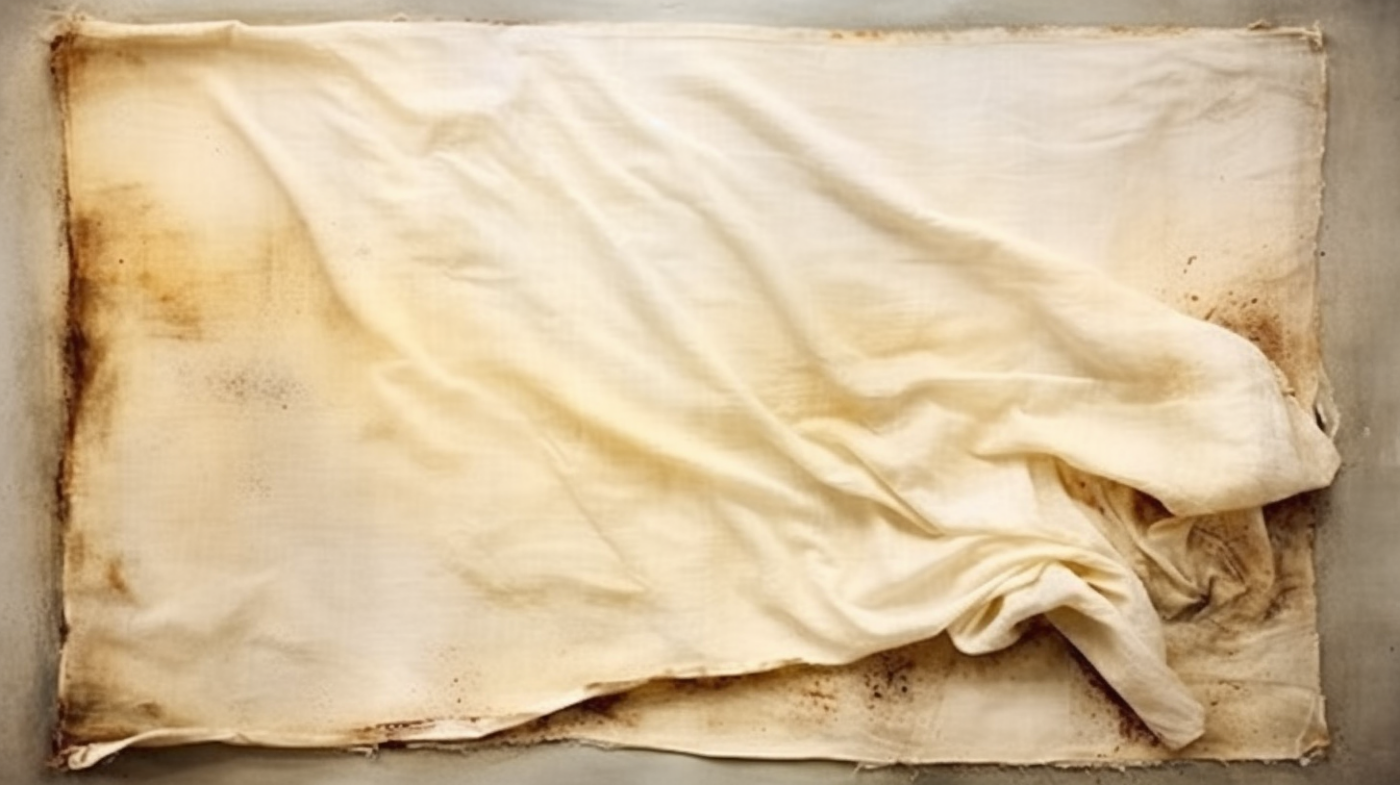Blog
How To Use Flour Sack Towels For Removing Grease And Oil Stains From Clothing
Have you ever spilled oil or grease on your favorite shirt? It can be frustrating trying to remove those stubborn stains without damaging the fabric.
Fortunately, there is a simple solution – flour sack towels!
Flour sack towels are a versatile tool that can be used for many household tasks, including stain removal. These towels are made from 100% cotton and are highly absorbent, making them perfect for soaking up oil and grease from clothing.
In this article, we will walk you through the process of using flour sack towels to remove grease and oil stains from your clothes so that you can restore them back to their original condition.
What are Flour Sack Towels and How Do They Work for Stain Removal?

You’re in luck, because flour sack towels are the secret weapon for removing stubborn grease and oil stains from your clothes! These towels are made from 100% cotton and have a tight weave which makes them highly absorbent. They are also durable and can be washed and reused multiple times, making them an eco-friendly option for stain removal.
To use a flour sack cotton towel to remove a stain, simply place the towel over the affected area and press down firmly. The towel will begin to absorb the grease or oil from the fabric. You may need to repeat this process several times until all of the stain has been removed. It’s important to blot rather than rub, as rubbing can actually push the stain further into the fabric.
One of the benefits of using flour sack towels for stain removal is that they can be used on a variety of fabrics without causing any damage. This means you don’t have to worry about ruining your favorite shirt or dress when trying to remove a tough stain.
Plus, since these towels are so affordable and readily available at most stores, they make for an easy addition to any laundry room arsenal.
Preparing Your Stained Garment

First, take a moment to assess the stain and determine if it requires any special treatment before using your new favorite cleaning tool. If the stain’s fresh, blot it gently with a clean cloth or paper towel to remove as much of the excess oil or grease as possible. Avoid rubbing the stain, as this can spread it further and make it more difficult to remove.
Next, turn your garment inside out and place it on a flat surface. This’ll make it easier to see the stained area and ensure that you’re working directly on the affected area. If there are multiple stains on different areas of your garment, tackle them one by one instead of trying to remove them all at once.
Lay your flour sack towel over the stained area of your garment and press down firmly with your palm or fingers. Be sure to cover all parts of the stain with the towel so that you don’t miss any spots. Leave the towel in place for several minutes so that it can absorb as much oil or grease as possible before moving on to step two: washing your garment in hot water with detergent.
Removing the Stain
Now that we’ve prepped our garment with flour sack towels, it’s time to remove the stain!
To do this, we’ll need to apply pressure and rub gently. It’s important to repeat this process as many times as needed until the stain is completely gone.
Let’s get started and say goodbye to those pesky oil and grease stains!
Apply Pressure and Rub Gently
Gently press the flour sack towel onto the stain and rub back and forth to lift away the grease, feeling a sense of satisfaction as you watch it disappear. Apply enough pressure to effectively remove the stain, but be careful not to apply too much force that it damages or stretches the fabric.
As you rub the stain with your flour sack towel, make sure to work from both sides of the fabric. This technique allows for better penetration of the towel into the fibers, ensuring that all oil and grease is lifted away.
Keep going until you see that there’s no more visible stain left on your clothing. With a bit of patience and persistence, using flour sack towels can help restore even heavily soiled garments to their former glory!
Repeat as Needed
To get your clothes looking good as new, keep repeating the process until all traces of the stain are gone.
After applying pressure and rubbing gently with a flour sack towel, check to see if there’s still any residue left. If there’s still some left, repeat the process again.
It may take a few tries to completely remove grease or oil stains from clothing using flour sack towels. Don’t be discouraged if it doesn’t come out on the first try. Just keep at it until you see results.
And remember to always wash your clothes after removing any stains to ensure they stay clean and fresh-smelling.
Cleaning and Drying Your Garment
After blotting the grease or oil stain with a flour sack towel, hang your garment to air dry instead of using a dryer. This will prevent the heat from setting in the stain and making it harder to remove later on.
Depending on how stubborn the stain is, you may need to repeat this process multiple times before it completely disappears.
Once you’re satisfied that the stain has been removed, wash your garment as usual. You can use any type of detergent that’s appropriate for your fabric, but avoid any bleach-based products as they can damage your clothing.
After washing, check to make sure that the stain is completely gone before drying.
If there’s still a trace amount of grease or oil left on your garment after washing, don’t panic – simply repeat the process until it’s gone for good.
Once you’ve successfully removed the stain, give yourself a pat on the back – not only have you saved money by avoiding costly dry cleaning bills, but you’ve also extended the life of your favorite clothing items!
Additional Tips and Tricks
So, we’ve already talked about how to use flour sack towels for removing grease and oil stains from clothing. But did you know that these versatile towels can be used for everyday cleaning too?
In this subtopic, we’ll discuss the benefits of using flour sack towels for cleaning tasks around the house, as well as tips on storing and caring for your towels to keep them in tip-top shape. We’re excited to share our favorite tricks with you!
Using Flour Sack Towels for Everyday Cleaning
Get ready to save your clothes from grease and oil stains with flour sack towels, because they’re perfect for everyday cleaning! These versatile towels are not only great for wiping down surfaces, but also for tackling stubborn stains on clothing. All you need is some warm water and a flour sack towel to get started.
To use a flour sack towel for everyday cleaning, simply wet the towel with warm water and wring out any excess. Then, use it to wipe down counters, tables, or any other surface that needs cleaning. The tight weave of the towel makes it effective at trapping dirt and grime. Plus, since it’s reusable and machine washable, you’ll save money in the long run by not having to constantly replace disposable paper towels.
| Pros | Cons |
|---|---|
| Reusable | Requires washing after each use |
| Durable | May leave lint behind |
| Absorbent | Can take longer to dry than paper towels |
Storing and Caring for Your Towels
When it comes to taking care of your trusty cleaning cloths, you’ll want to make sure they’re stored properly to extend their lifespan.
After using flour sack towels for removing grease and oil stains from clothing, it’s important to wash them thoroughly before storing them away. You don’t want any leftover grease or oil sitting on the towels, as this can cause discoloration and deterioration over time.
Once your towels are clean and dry, fold them neatly and store them in a cool, dry place. Avoid exposing them to direct sunlight or high temperatures, as this can cause the fabric to weaken and fade.
It’s also a good idea to keep your flour sack towels separate from other types of cleaning cloths, such as microfiber or terry cloth, as these materials may snag or damage the delicate fibers of the flour sack towels.
By taking proper care of your towels, you can ensure that they remain effective at removing grease and oil stains for years to come.
